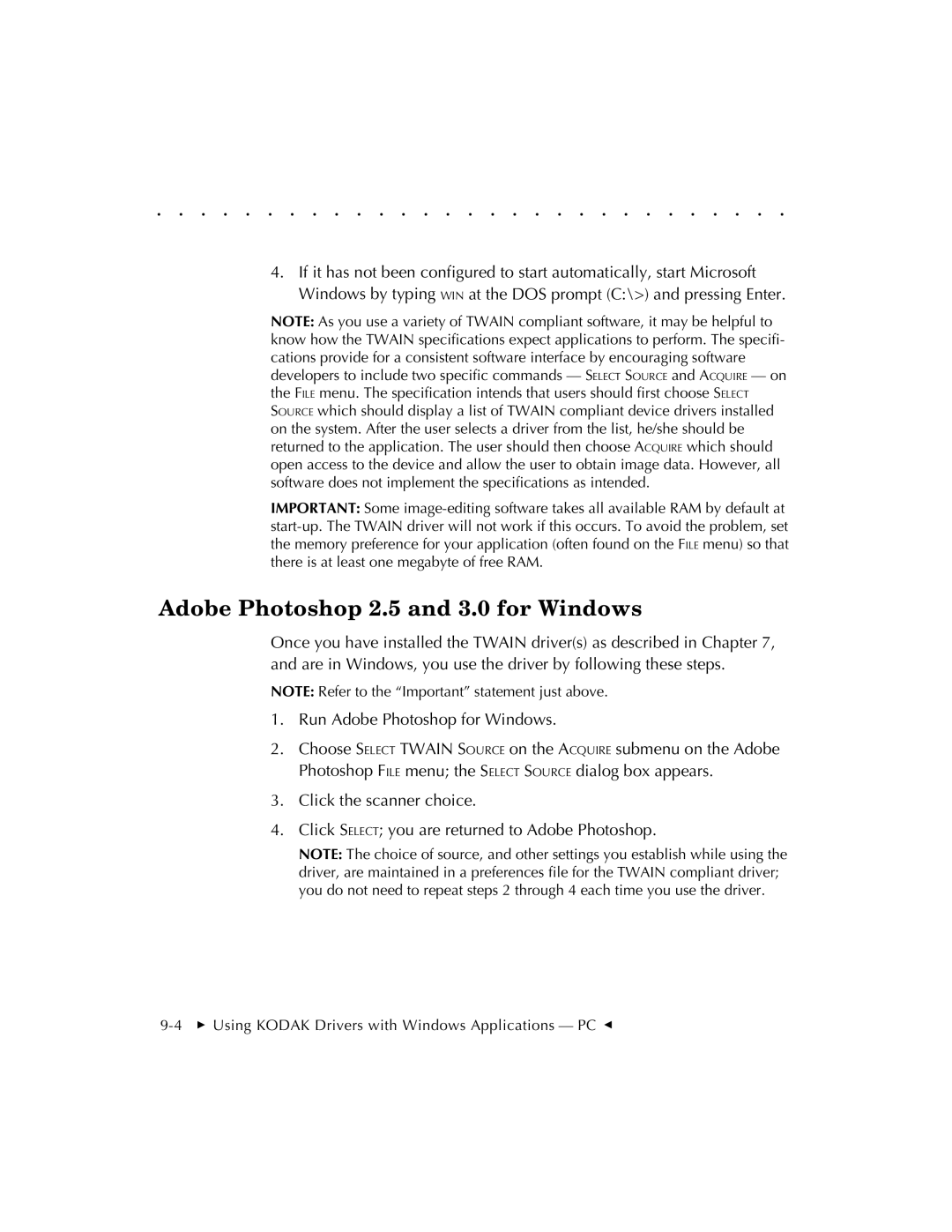. . . . . . . . . . . . . . . . . . . . . . . . . . . . .
4.If it has not been configured to start automatically, start Microsoft Windows by typing WIN at the DOS prompt (C:\>) and pressing Enter.
NOTE: As you use a variety of TWAIN compliant software, it may be helpful to know how the TWAIN specifications expect applications to perform. The specifi- cations provide for a consistent software interface by encouraging software developers to include two specific commands — SELECT SOURCE and ACQUIRE — on the FILE menu. The specification intends that users should first choose SELECT SOURCE which should display a list of TWAIN compliant device drivers installed on the system. After the user selects a driver from the list, he/she should be returned to the application. The user should then choose ACQUIRE which should open access to the device and allow the user to obtain image data. However, all software does not implement the specifications as intended.
IMPORTANT: Some
Adobe Photoshop 2.5 and 3.0 for Windows
Once you have installed the TWAIN driver(s) as described in Chapter 7, and are in Windows, you use the driver by following these steps.
NOTE: Refer to the “Important” statement just above.
1.Run Adobe Photoshop for Windows.
2.Choose SELECT TWAIN SOURCE on the ACQUIRE submenu on the Adobe Photoshop FILE menu; the SELECT SOURCE dialog box appears.
3.Click the scanner choice.
4.Click SELECT; you are returned to Adobe Photoshop.
NOTE: The choice of source, and other settings you establish while using the driver, are maintained in a preferences file for the TWAIN compliant driver; you do not need to repeat steps 2 through 4 each time you use the driver.
